How to Do Customer Sentiment Analysis? [2025 Guide]
Table of contents
According to the PwC report, 32% of customers leave a brand after just one negative experience. If you know what caused it, that’s okay. You can fix it next time. But the truth is, people often don’t say it out loud. That’s where customer sentiment analysis helps you read between the lines and discover problems before it’s too late.
Read our article and learn:
✔️ What customer sentiment analysis is.
✔️ Tangible benefits of tracking customer sentiment.
✔️ How to implement a customer sentiment analysis process into your practice.
What is customer sentiment analysis? Definition
Customer sentiment analysis is a process of analyzing customer feedback to understand how customers feel about a product, service, brand, or experience.
And it goes far beyond simply reading what customers say!
Using Natural Language Processing (NLP) and machine learning, the customer sentiment analysis automatically identifies the emotional tone (positive, negative, neutral) behind the feedback.
It involves real-time monitoring of different feedback forms, such as:
- Reviews
- Online brand mentions
- Customer support tickets
- Survey responses
- User-generated content
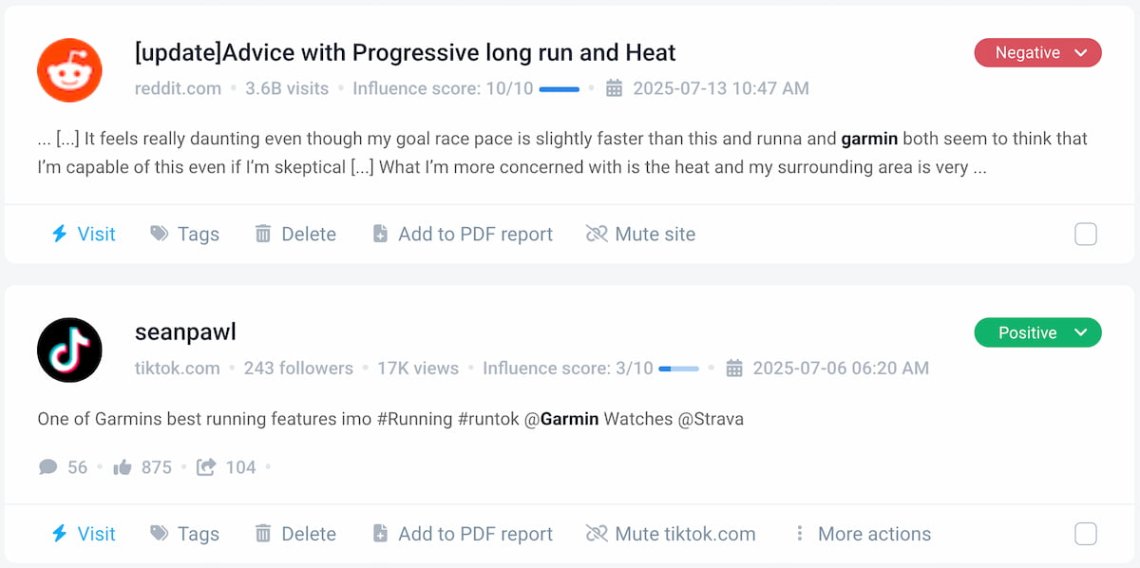
Conduct a customer sentiment analysis now!
Benefits of customer sentiment analysis
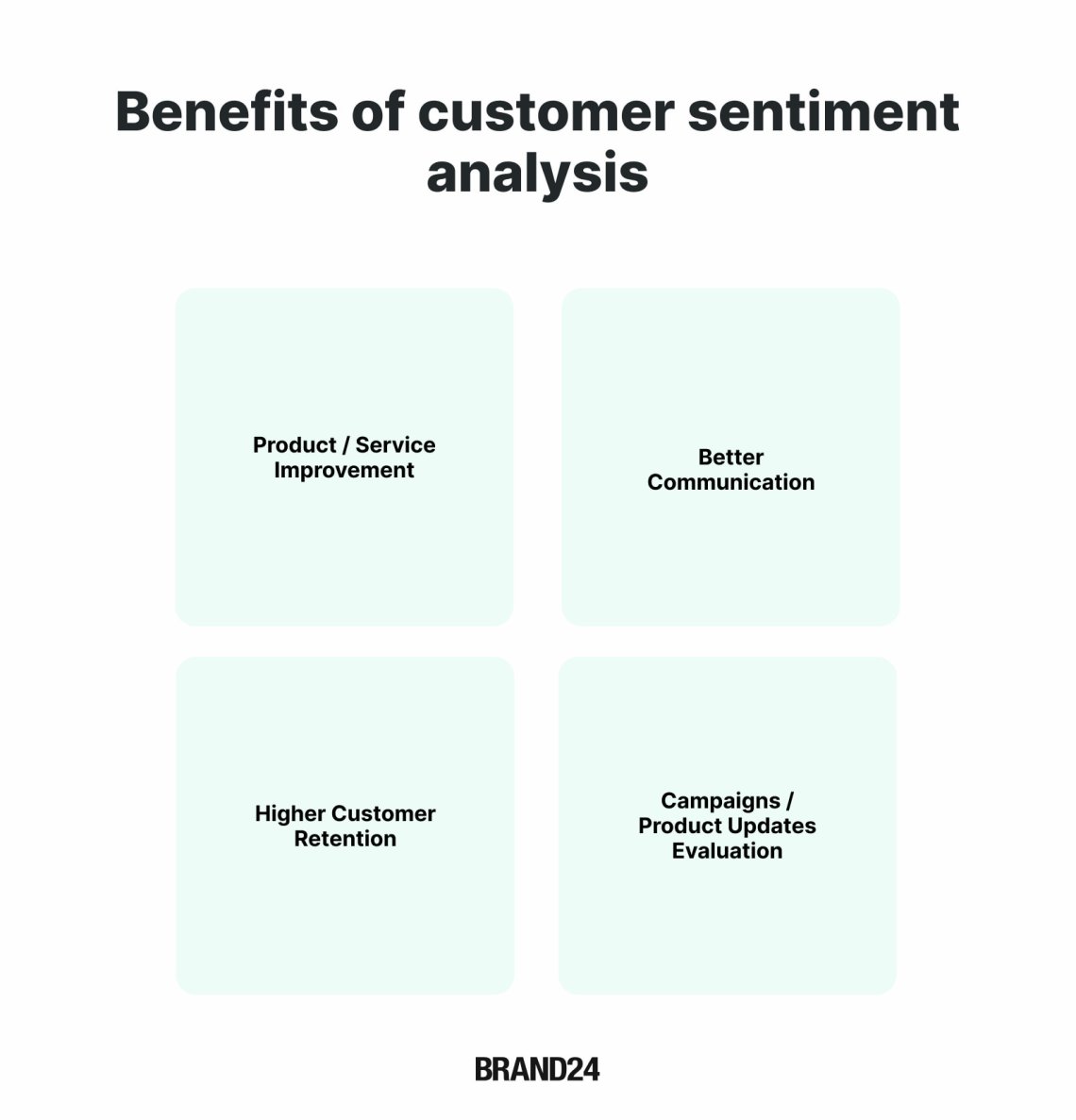
Curious how social listening drives real results? Check out the Labubu case study in our article on the benefits of sentiment analysis.
You can improve your product or service
Customer sentiment insights are invaluable sources of information about customers’ recurring issues, bugs, or pain points.
By analyzing directly reported problems or listening to commonly discussed frustrations, you can make data-driven decisions about the priorities of your product or service updates.
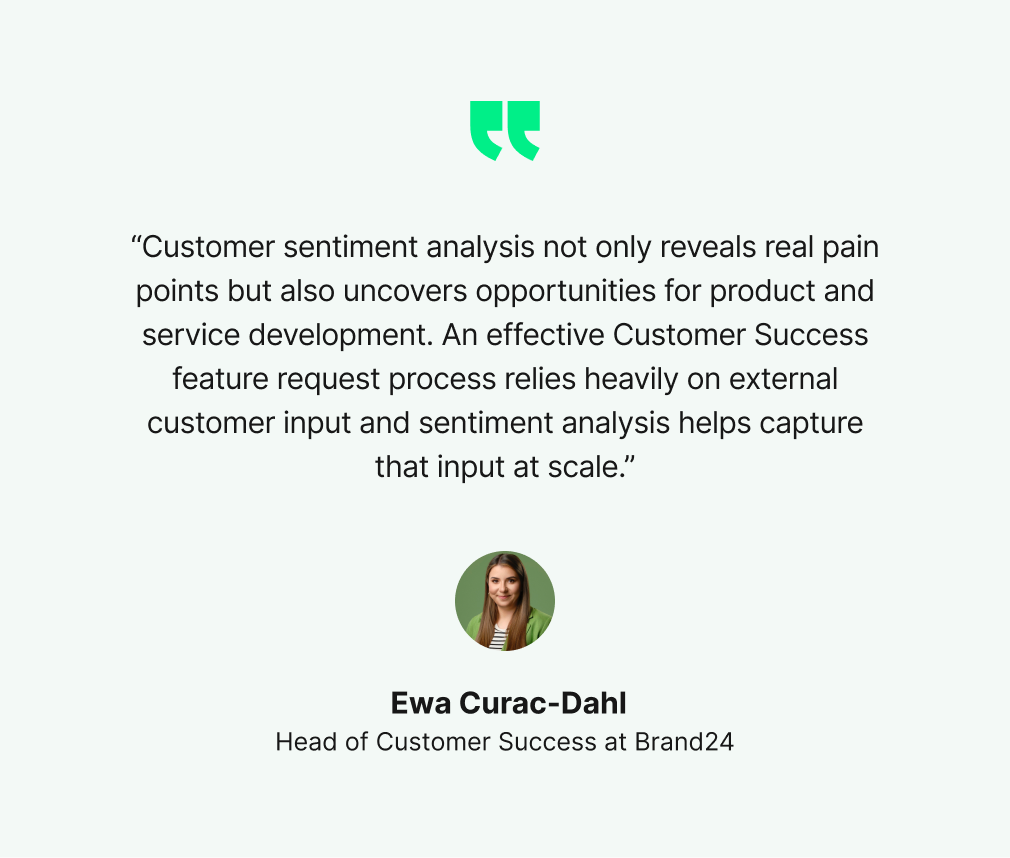
You can discover communication gaps
Sometimes, negative customer sentiment signals unclear instructions or confusing onboarding.
By analyzing how customers talk about your brand, you can detect such pain points and, thus, upgrade your help pages, email copy, or other training materials to improve the overall customer experience.
Try the best customer sentiment analysis tool & enjoy all the benefits!
You can prevent customer churn
Repetitive complaints, a lower customer sentiment score, or a spike in negativity in brand mentions are often early signs that a customer is about to leave.
Sentiment analysis helps you detect these warning signals before they turn into abandoning your brand.
This allows your customer success team to act proactively, resolve the issue, and increase the chances of retaining the customer.
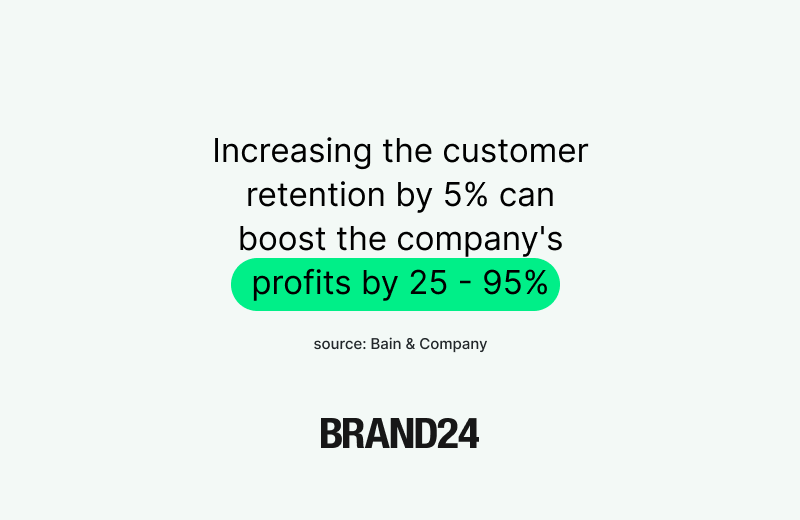
You can evaluate the success of product changes or marketing campaigns
Customer sentiment is one of the fastest ways to understand how people really feel about a new feature, pricing, or your marketing campaigns.
By tracking how sentiment trends before and after a change, you can quickly uncover people’s reactions towards it.
It allows you to adjust your strategy in real time and avoid long-term damage to your brand reputation.
Track your customer sentiment in real time!
How to do customer sentiment analysis? Step-by-step guide
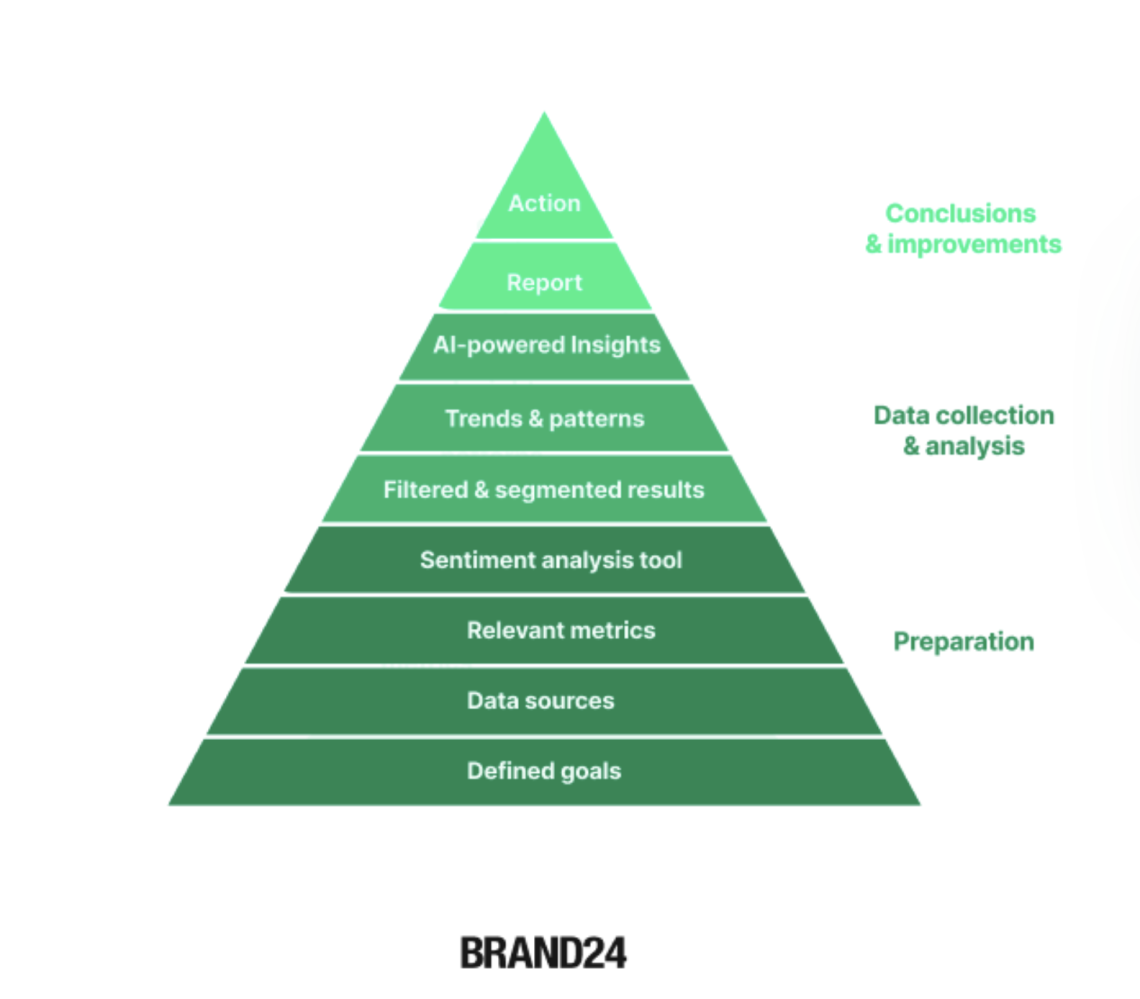
Step 1: Define your goals
First, before analyzing anything, you should clarify what you want to learn from measuring customer interactions & sentiment.
Setting goals creates a framework and prevents your analysis from going off topic.
You can divide goals by different aspects, such as:
- Time horizon (long-term and short-term)
- Organizational level (company-level and team-level)
- Focus area (brand, product, customer experience, campaign, crisis, etc.)
As for goals themselves, define them using the good old SMART framework.
It means that each goal should be:
- Specific
- Measurable
- Achievable
- Relevant
- Time-bound
Example of a SMART customer sentiment analysis goal
Let’s say you’d like to measure the long-term impact of a new product launch on customer sentiment towards your brand.
Using the SMART methodology, your goal could look like the following:
Increase the share of positive brand mentions related to the new product by 20% within six months.
Step 2: Choose the data sources
After setting your goals, the next step is deciding where you will get customer feedback and how to measure it.
Depending on your business niche, internal customer experience policy, and communication channels your brand uses, customer sentiment can come from many different sources.
These include:
- Internal feedback – customer satisfaction surveys, support tickets, live chats, direct emails, widgets, etc.
- Review platforms – G2 & Trustpilot (for software), Booking & TripAdvisor (for travel and hospitality), Google Maps, Yelp, and much more
- Social media platforms – comments, mentions, and tags published on Facebook, Instagram, X (Twitter), YouTube, etc.
- Community and forum discussions – Reddit threads, Quora answers, Discord groups, etc.
- News and blogs – expert voices of your brand, products, or services.
Monitor all your customer feedback sources!
Step 3: Track relevant metrics
Now, it’s time to decide how you’ll measure customer sentiment.
Tracking the right metrics will help you track if you’re heading toward your goals and spot patterns in how customers feel about your brand, product, or service.
These metrics are your road signs.
Here are some of the most frequently used customer sentiment metrics:
- Customer Satisfaction Score (CSAT) – a numeric value presenting how satisfied customers are (usually distributed in a post-interaction survey).
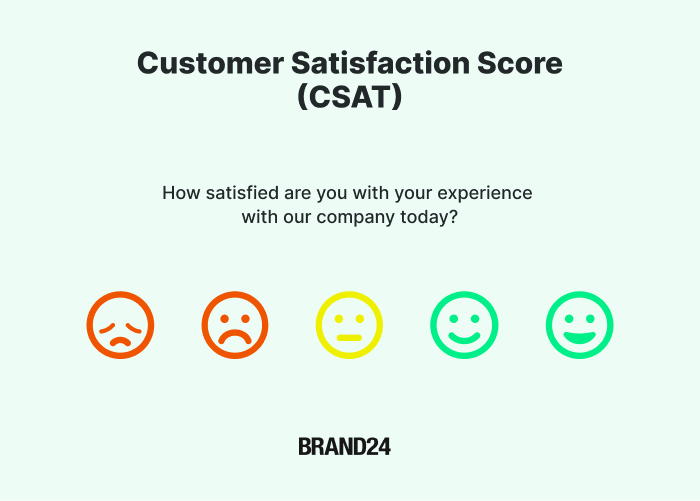
- The volume of mentions – shows how often people discuss your brand online. It can signal increasing brand visibility or emerging problems.
- Sentiment breakdown – the percentage of positive, negative, and neutral mentions. It gives you a bird’s-eye view of brand perception.
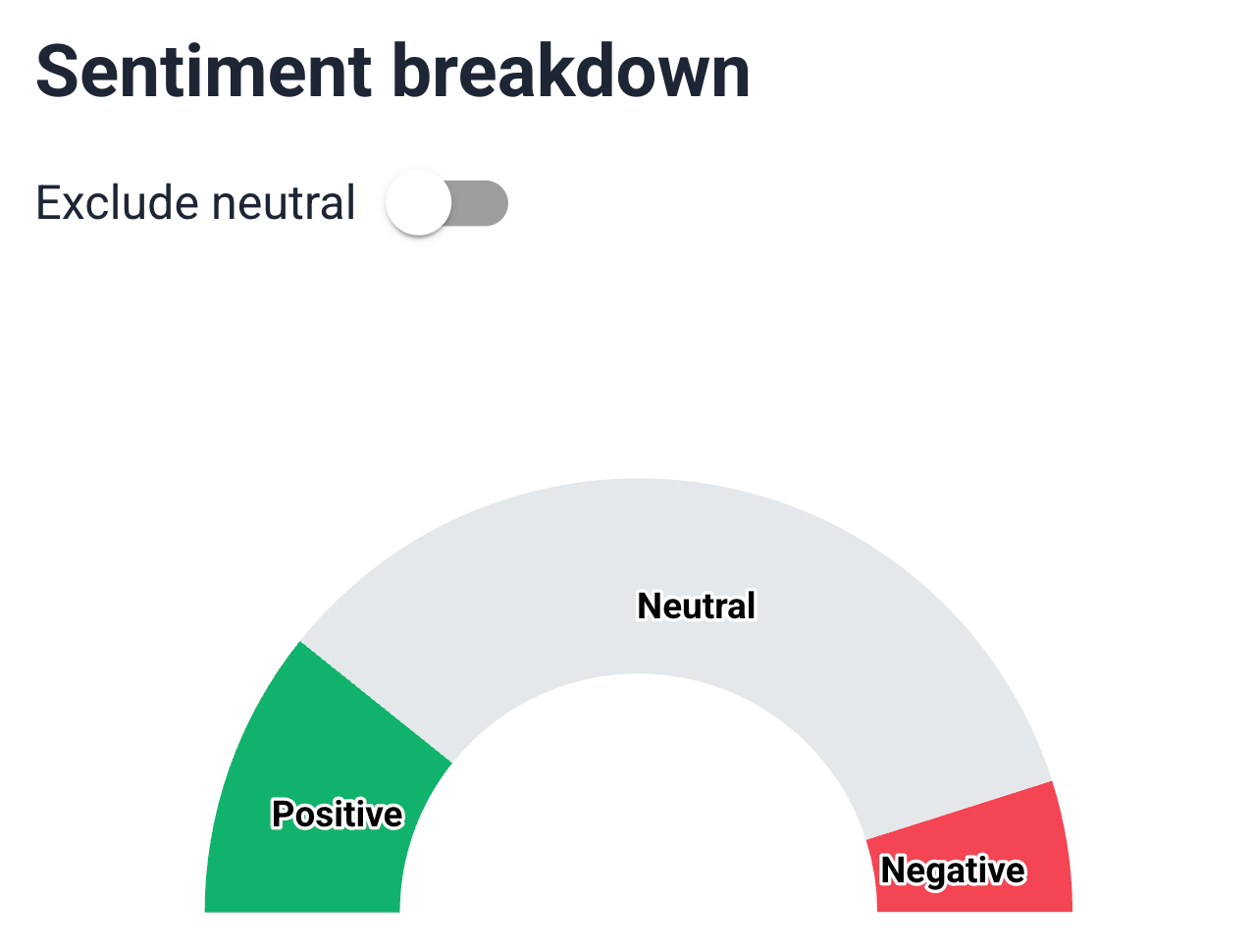
- Churn Rate – the percentage of customers who stop buying from you in a given period. A growing churn rate is a red flag indicating the rise of negative sentiment.
- Net Promoter Score (NPS) – measures customer loyalty by asking how likely a customer is to recommend your brand to others (on a scale from 0 to 10).
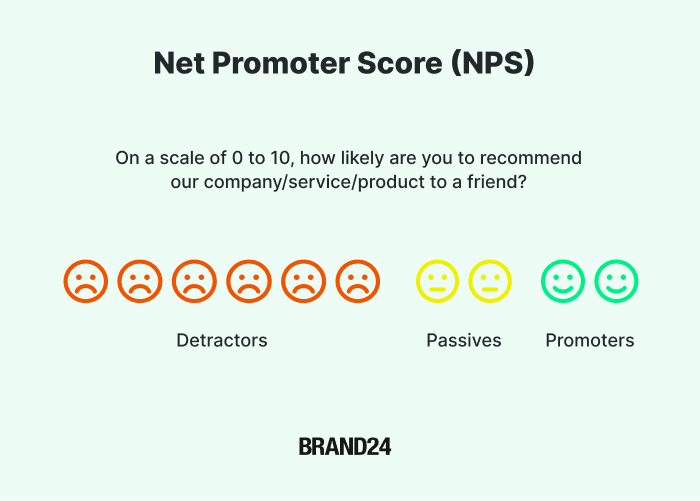
- Emotion analysis – more detailed and granular insight into what feelings people express when talking about your brand, products, or services (i.e., anger, fear, joy).
- Share of voice (by sentiment) – how your brand’s sentiment looks compared to your market rivals.
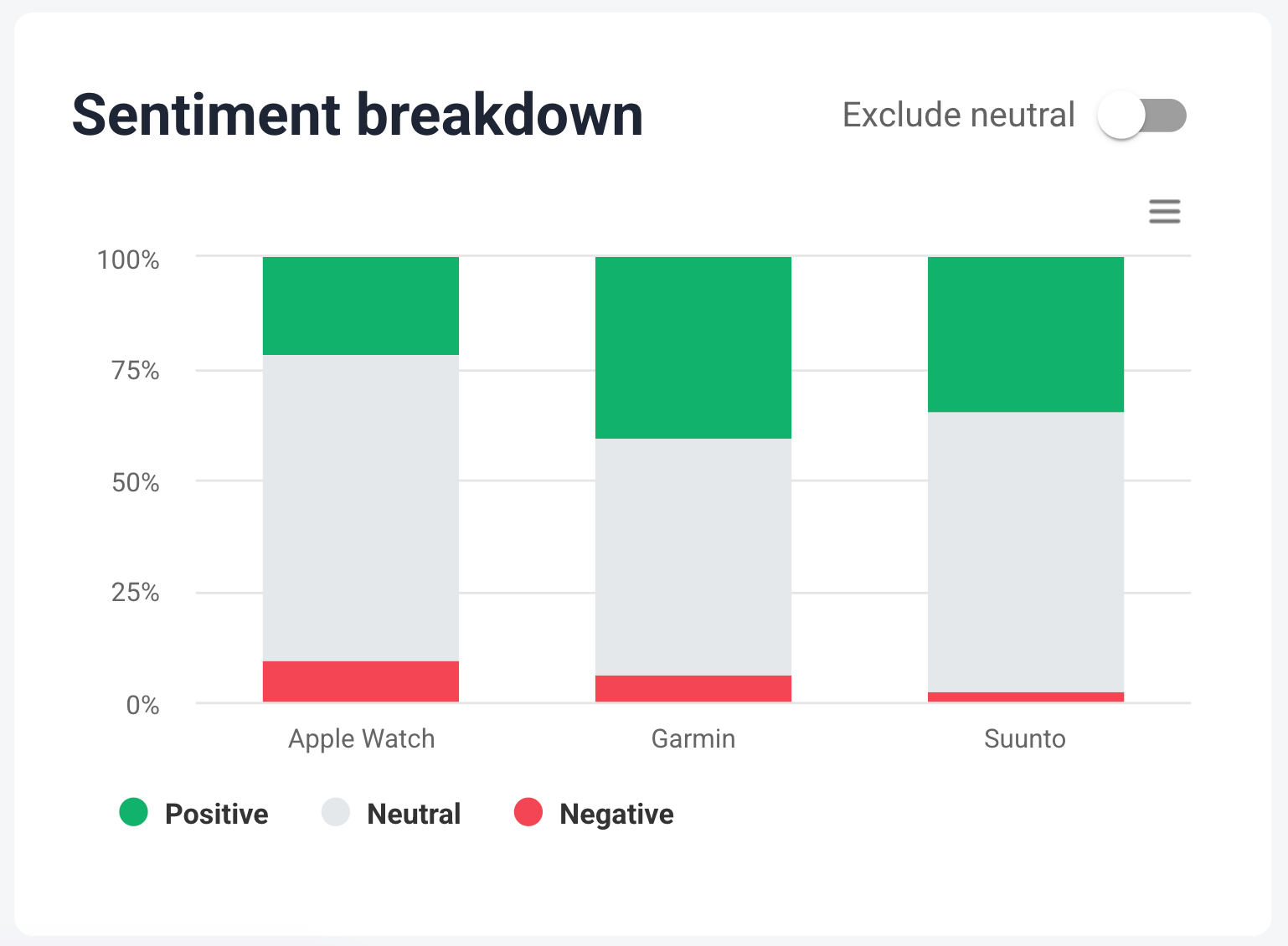
Need more details? Read our article on the top customer success metrics!
Step 4: Pick a customer sentiment analysis tool
Let’s make it clear – manual analysis is totally ineffective.
Especially if you need to collect and interpret thousands of reviews, media mentions, and other customer feedback signals.
Sentiment analysis tools can do the heavy lifting for you. They automatically collect, classify, and draw insights from customer sentiment data.
When choosing the right tool, you must consider the following things:
- Multi-channel monitoring – the more sources the tool monitors, the better
- Real-time analysis – to spot patterns in customers’ discussions fast
- Custom filters – to segment data by sources, topics, emotions, intents, etc.
- Emotion detection – to go deeper than basic negative, neutral, and positive sentiment analysis
- AI-powered features – to boost the process of drawing actionable insights
Brand24 has it all.
This AI-boosted media monitoring tool uses natural language processing and machine learning to track and analyze customer sentiment hidden behind mentions published on:
- Social media platforms, such as Facebook, Instagram, X (Twitter), YouTube, TikTok, LinkedIn, Reddit, Bluesky, Telegram, and Twitch
- Review platforms and newsletters
- News sites, blogs, podcasts, video platforms, forums, and other websites.
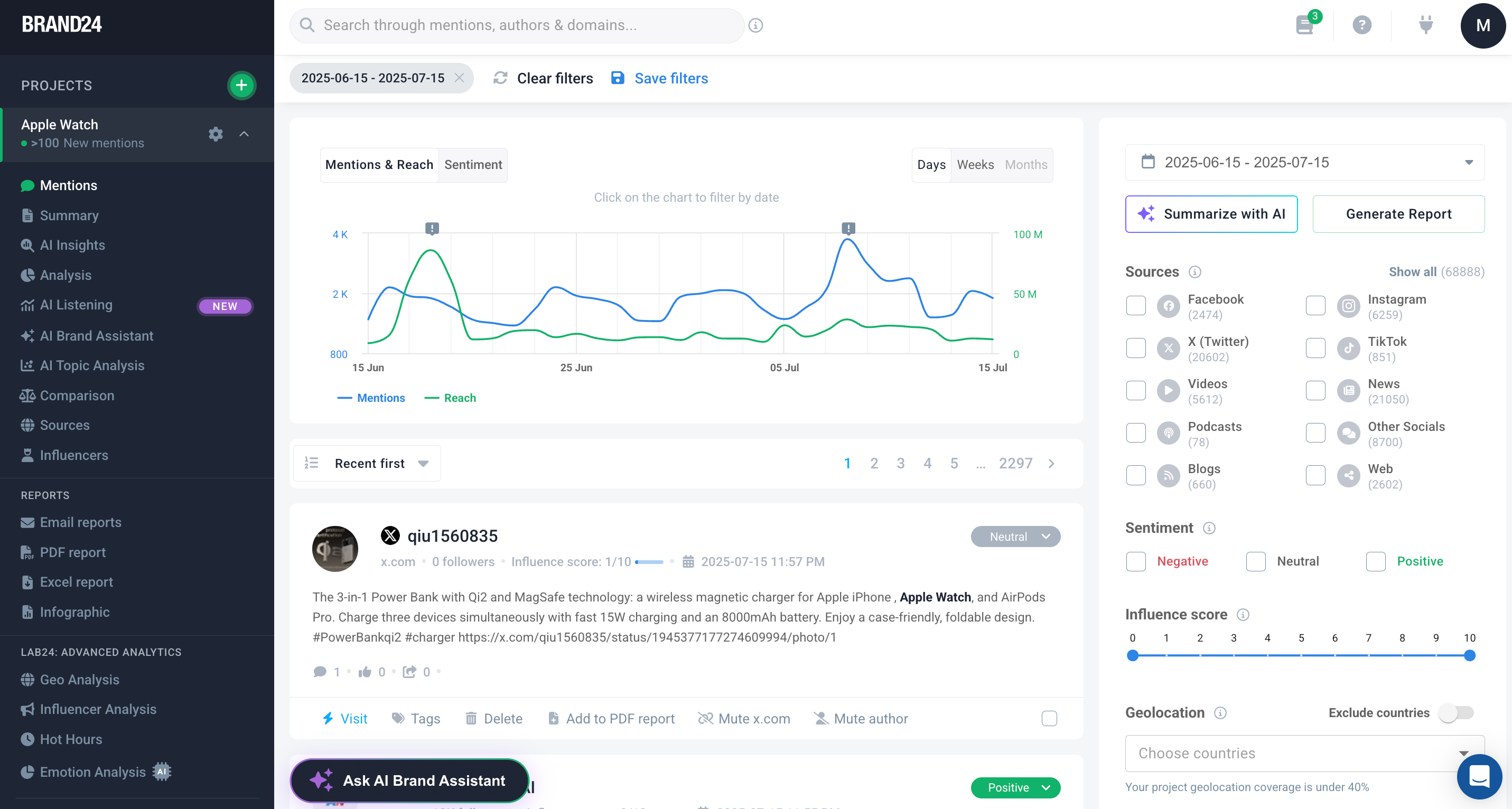
Try Brand24 – the best customer sentiment analysis tool!
The preparation phase is all done!
Now, it’s time to dive into the core of customer sentiment analysis – collecting, filtering, and analyzing the data to gain valuable insights.
Step 5: Filter and segment your results
Raw sentiment data can be valuable, but it needs filtering and segmentation.
Depending on your chosen goals, sources, and metrics, you can categorize customer opinions based on:
- Sentiment – positive, negative, or neutral
- Source – e.g., Instagram or review platforms
- Intent – promotional, opinion sharing, advocacy, etc.
- Keywords – related to price, new features, campaigns, etc.
Example ⬇️
There are endless possible combinations, so let’s focus on just one example of how you can filter and segment data. Our sample brand will be Apple Watch.
Using Brand24 custom filters, I filtered customer data to discover the common customer frustrations towards the Apple Watch Series 10.
I used the following filters:
- Sentiment: negative only
- Intent: opinion sharing
- Keywords: “Apple Watch 10” or “Apple Watch Series 10”
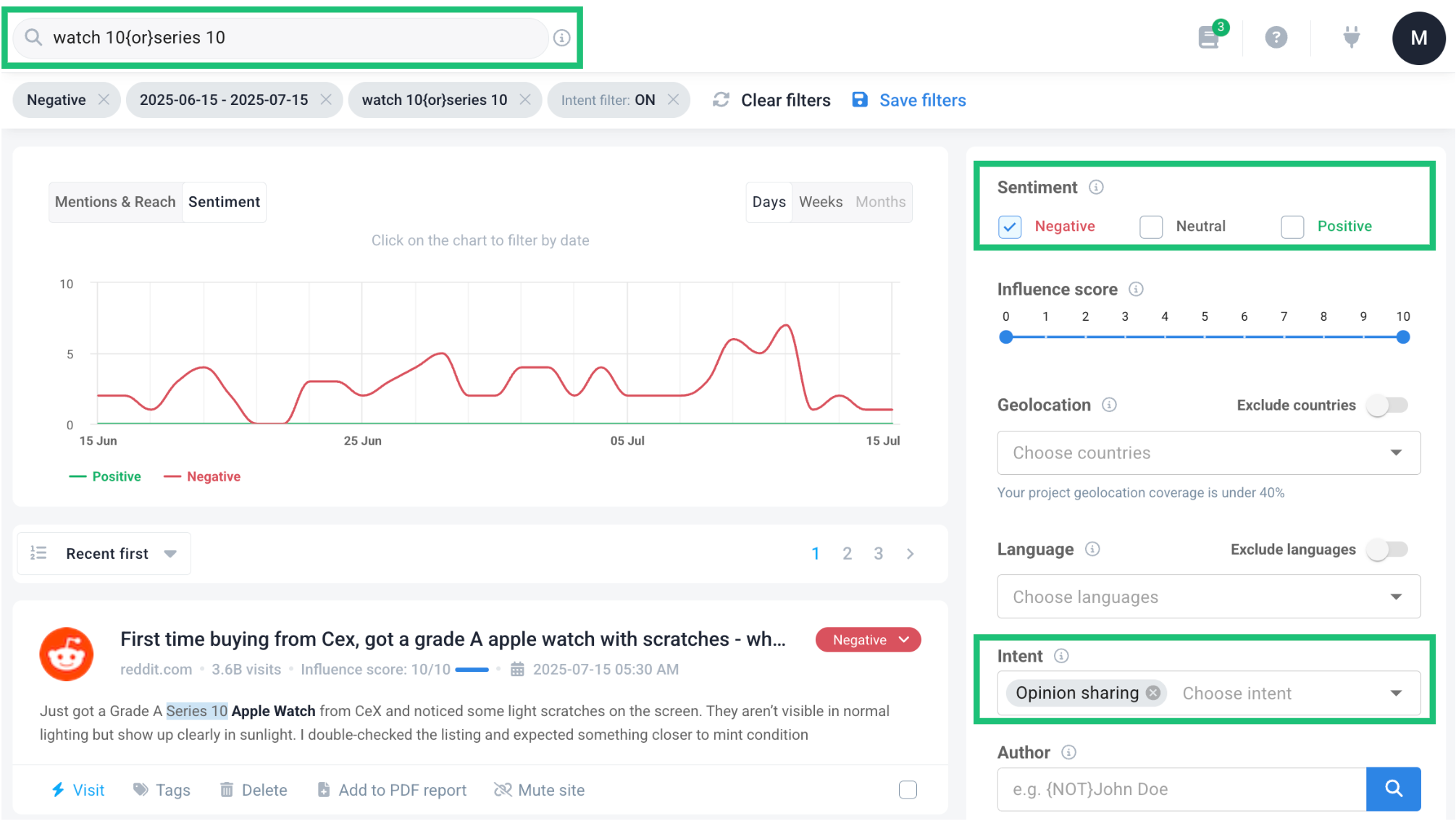
Two conclusions from that quick overview:
- People most frequently criticize Apple Watch Series 10 on X (Twitter) and Reddit
- The most common complaints are about third-party app integrations and problems with product customizations
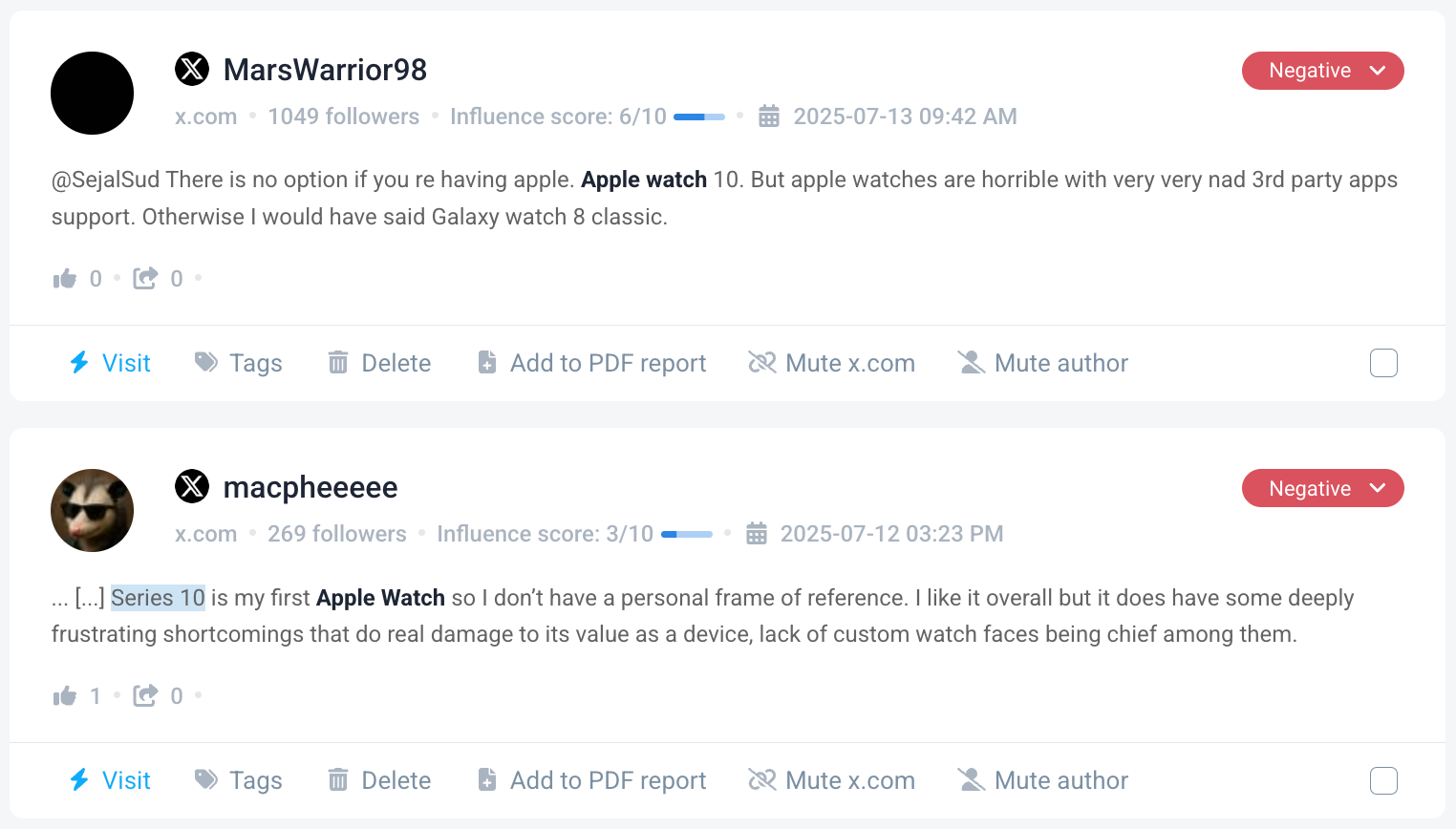
Let Brand24 track & analyze your customer sentiment data!
Step 6: Discover trends and patterns
Filtering and segmenting results is fine for uncovering granular insights.
But if you need a big-picture understanding of how customer sentiment evolves, you have to identify trends and behavioral patterns.
This step is about connecting the dots:
- Is there an increase in negative sentiment after a specific update or campaign?
- Do certain keywords or topics consistently lead to customer dissatisfaction?
- Are customer emotions trends (like anger or sadness) linked to particular features or periods?
- Is sentiment getting better or worse month over month?
Example ⬇️
Let’s go back to Apple Watch.
Using the Brand24 AI Topic Analysis – a feature that clusters mentions by themes – I checked which topics were most commonly discussed in opinion-related customer comments.
As you can see below, the number one topic is the Apple Watch experience. Notably, nearly 50% of mentions have negative sentiment.
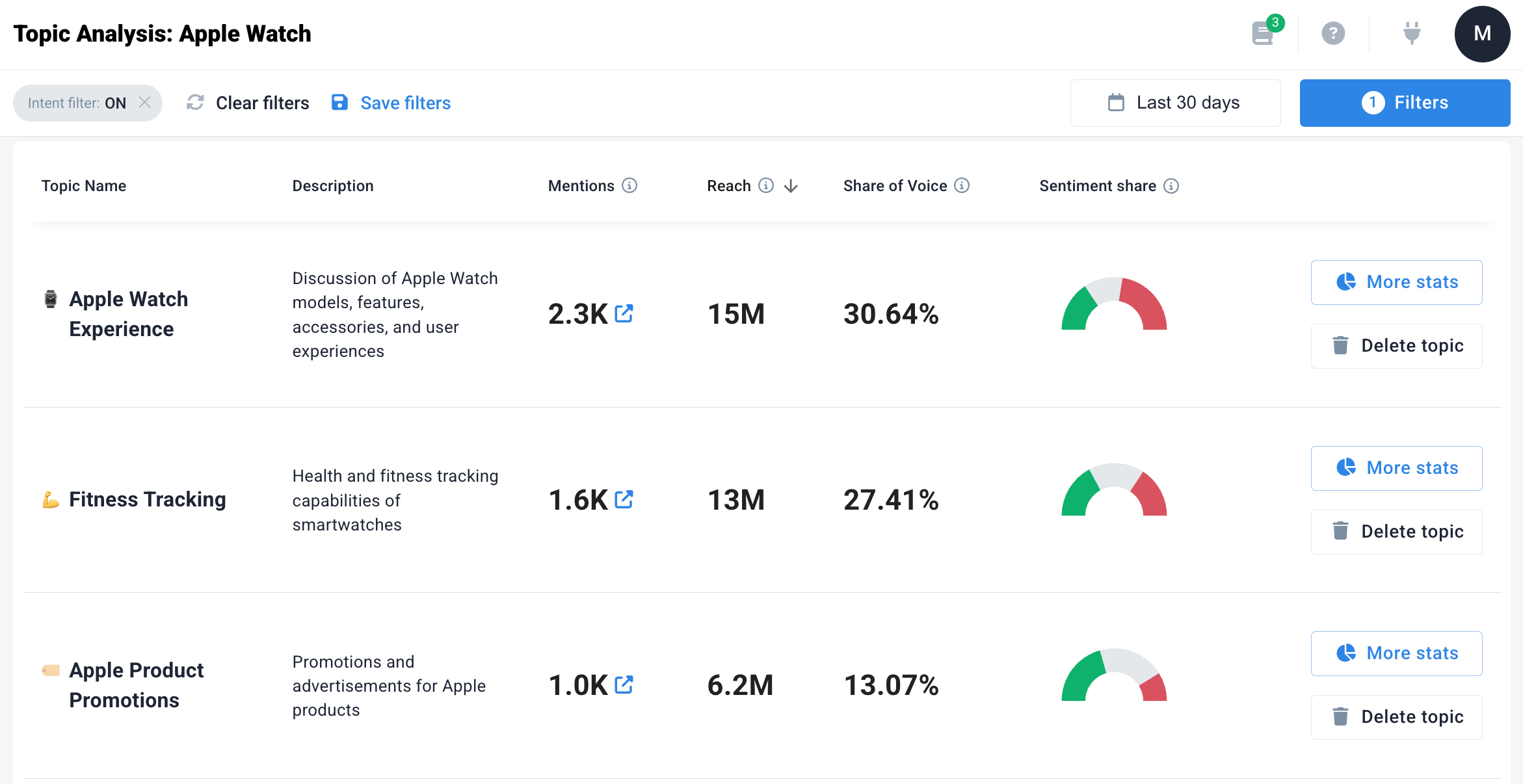
I dug deeper. After clicking “More stats”, I got into the topic details and discovered that:
- The most discussed frustrations were related to battery life and third-party app integrations. So, again, it confirmed my previous insight.
- There is also a huge criticism related to a recent software update, as users described their devices as “dead,” “unusable,” or “not syncing anymore.”
- Platforms like X (Twitter) and Reddit were the main sources of criticism.
Takeaway?
This pattern underlines how analyzing sentiment over time – combined with a topic filter – can quickly uncover both what customers are unhappy about, and when and where those conversations are taking place.
Discover your key customer sentiment trends!
Step 7: Draw AI-powered customer sentiment insights
Now that you have identified the main patterns and recurring topics, it’s time to extract insights you can later present to product, marketing, and customer service teams.
This is where AI adds real strategic value.
The best sentiment analysis tools, like Brand24, not only track mentions and analyze trends but also draw actionable conclusions and suggest recommendations.
Example ⬇️
I was curious which Apple Watch features drive the most positive sentiment among its customers.
To discover this, I typed a simple prompt to the AI Brand Assistant – the ChatGPT-style Brand24 feature that has access to the internal project data.
After a few seconds, the Brand Assistant provided me with a list of well-commented Apple Watch features.
Above all, people are happy about sleep detection, iOS ecosystem integrations, and compatibility with smart home devices.
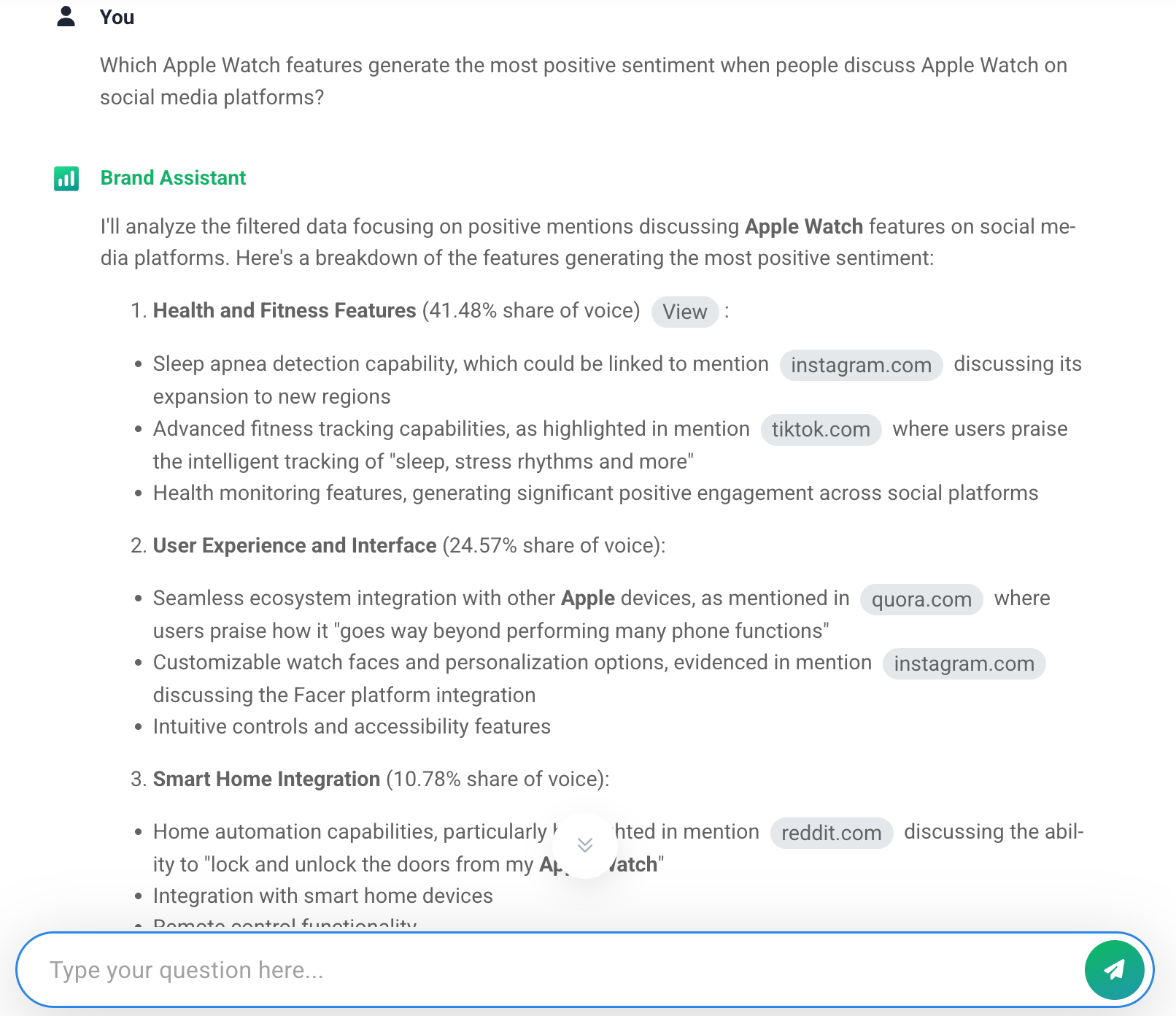
Then, I switched to AI Insights – another Brand24 feature powered by artificial intelligence – to check the brand recommendations.
My favorite one is definitely a suggestion to launch a health-focused marketing campaign targeting elderly customers.
Nice idea to increase brand awareness in this group!
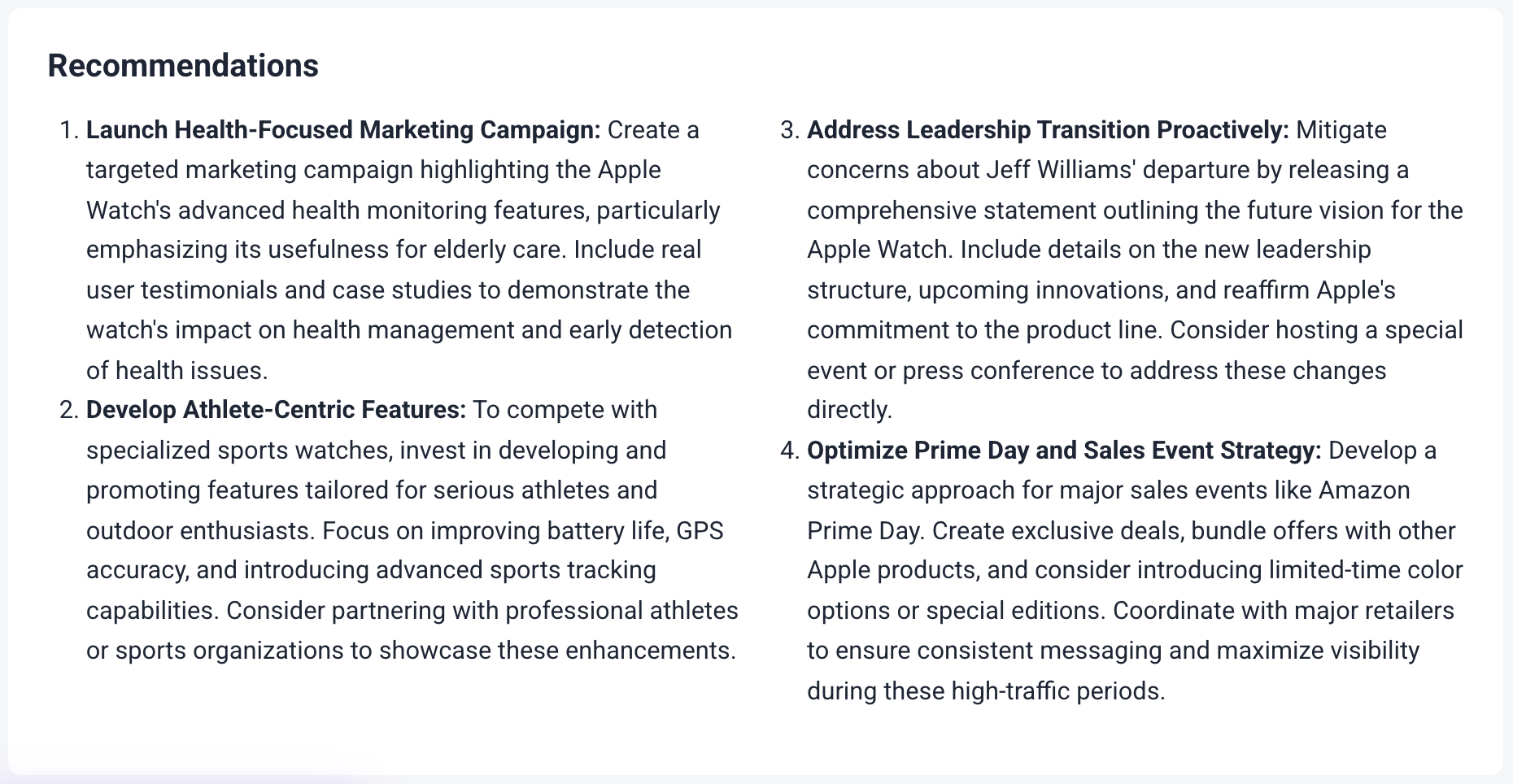
Enjoy the power of Brand24’s AI-powered features!
Okay buddy, it’s time to turn data into action!
The last stage focuses on sharing findings and executing improvements based on your customer sentiment analysis.
Step 8: Report your findings
Your customer insights are valuable only if they reach the right people. And only if they understand what you’re trying to tell. That’s why reporting is a crucial part of the process.
Don’t overwhelm your audience with raw data. Instead, tell the story behind the numbers.
A good sentiment report should include clear, structured, and relevant elements that you covered in previous steps.
Underline:
- What you tracked – the goals, sources, time period, and methodology
- Key sentiment metrics
- Trends, topics, patterns, and spikes – what changed, when, and why
- Top strengths and weaknesses
- Recommended actions – what to fix, what to strengthen, and what to monitor.
Tools like Brand24 can generate automated reports within a few clicks. You can export even full AI-generated summaries.
Check for yourself:
👉 Interactive Customer Sentiment Analysis Report Example
👉 PDF Report Example
👉 Competitor Comparison Report
Step 9: Take action
All steps should always lead to the final one. No matter how hard you work throughout the process, none of it will matter if it doesn’t drive change.
So, once you’ve identified what needs to be done – act on it!
Simply:
- Fix or optimize features that users complain about.
- Clarify confusing messaging across help pages and onboarding.
- React to negative sentiment spikes with dedicated customer support teams.
- Launch marketing campaigns that highlight the features customers praise.
- Adjust pricing or packaging if sentiment trends suggest it.
- Take any other action resulting from your customer sentiment analysis!
Try Brand24 – the best customer sentiment analysis tool!
Conclusion
Customer sentiment analysis helps you understand how your clients really feel about your brand, product, or service.
It lets you detect potential or emerging problems, understand churn signals, and meet customer expectations.
With clear goals, the right data sources, relevant metrics, and an AI customer sentiment analysis tool (like Brand24), you can build the whole process on solid foundations.
Working with data, such as filtering & segmenting feedback, discovering trends & patterns, and – most importantly – drawing actionable insights allows you to connect internal efforts with real customer needs.
It gives marketing, product, and support teams the clarity they need to act fast and accurately.
Remember that customer sentiment is dynamic. Only tracking it regularly keeps your brand synchronized with expectations.
And yeah, maybe it requires some work. But it totally pays off – especially when done at scale!
Want to level up your data game even more? Explore our comprehensive Business Intelligence guide for full insights.
Final thoughts:
- Manual analysis is possible, but takes a lot of time – especially if you want to see a big picture.
- Sentiment is often hidden between the lines – tools help you read it.
- AI is a shortcut from data to decisions.
- Better customer sentiment leads to better retention, loyalty, and growth.
Start a Brand24 free 14-day trial and analyze customer sentiment towards your brand!




